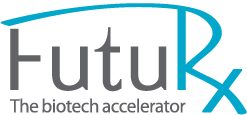

CSO: Dr. Haim Belinson
Bsense Bio Therapeutics is developing small molecules for the treatment of sensory hyperexcitability related disorders. Bsense is pioneering a novel approach targeting multiple hyperexcitability related mechanisms using a single compound, to achieve greater efficacy and safety.
Sensory neuron Hyperexcitability refers to a multitude of indications such as Pain, Pruritus, Tinnitus and seizure, in which sensory neurons are excessively active leading to dire clinical and quality of life ramifications for patients. These indications are considered as significant unmet medical needs representing a major healthcare burden.
Bsense Bio’s approach is based on the targeting of two cation channels, a ligand-gated cation channel and a voltage-gated potassium channel, respectively, TRPV1 and Kv7.2/3, which are co-localized on sensory nociceptive neurons and are widely recognized as prominent players in the modulation of neuronal excitability. The company has generated preclinical proof-of-concept in chronic pain and has recently been generating data in additional hyperexcitability indications in the space of Pruritis and Tinnitus (some of which with Orphan disease designation).
The company is financed by Takeda Ventures Inc., OrbiMed Israel Partners, and Johnson & Johnson Innovation (JJDC), RMGP and the Israel Innovation Authority (IIA), and was founded in September 2018 at the FutuRx biotech incubator.
SCIENTIFIC APPROACH
Sensory hyperexcitability translates to increase in sensory stimuli such as proprioception, vision, sound, and touch as unpleasantly heightened sensations. The pathophysiology could arise from nerve damage, inflammation, and metabolic diseases all of which may alter the normal function of sensory neurons. In each case, the spatial and mechanistic emergence of sensory hyperexcitability may lead to different and varied medical manifestation. However, in all cases, the sensory neuronal system’s excessive activity is the hallmark of the disorder. Importantly, the anatomical positioning of the dorsal root ganglions (DRG) outside the blood-nerve barriers of the central nervous system, has made sensory neurons a prime target for altering incoming sensory signals. Thus, modulation of hyperexcitability at the level of DRG where Kv7.2/3 and TRPV1 are predominantly and mutually expressed presents a unique mechanism to provide significant relief and superior tolerability to sensory hyperexcitability disorders.
INDICATIONS
Sensory hyperexcitability is observed in many different neurological disorders, including Epilepsy, Anxiety, Autism, Pain, Tinnitus, Pruritus and many more. Sensory hyperexcitability related disorders impact millions of people worldwide. Moreover, these conditions have a dire effect on the quality of life of patients and present with a significant operational and economic burden on healthcare systems. The multitude of patients suffering from sensory hyperexcitability disorders emphasize the significant unmet medical need that ranges from complete lack of pharmacological treatment (i.e., Tinnitus, Orphan Pruritic conditions) to conditions with multiple available pharmacological treatments but with unsatisfactory efficacy and at times also with significant side effects including drug abuse and addiction (i.e. pain).
Dr. Haim Belinson, PhD – CSO
Dr. Haim Belinson holds a PhD in Neurobiology from Tel-Aviv University and did his post-doctoral research at the Department of Pediatrics, Institute for Human Genetics, UCSF, San Francisco, CA. Haim has experience in the development of drugs for neurodegenerative diseases and pain from Teva Pharmaceutical Industries, where he dealt with both the scientific aspects as well as leading various stages of drug development. He has over 15 years of experience in Neurobiology research.
Prof. Bernard Attali – Inventor
Professor, Department of Physiology & Pharmacology, Sackler Faculty of Medicine, Tel Aviv University. Prof. Attali is the inventor of the technology and as such will serve as a consultant to the company. Prof. Attali published over 100 research papers in leading journals in his field. In addition, he was awarded several awards, including the Israel Cancer Research Fund and the Shtacher award from the Tel-Aviv University.
Dr. Asher Peretz: Co-Inventor
Department of Physiology & Pharmacology, Sackler Faculty of Medicine, Tel Aviv University. Dr. Asher Peretz holds a Ph.D from the Hebrew University of Jerusalem. He is a co-inventor of the technology and will share his comprehensive knowledge and experience in the field of electrophysiology of ion channels.
